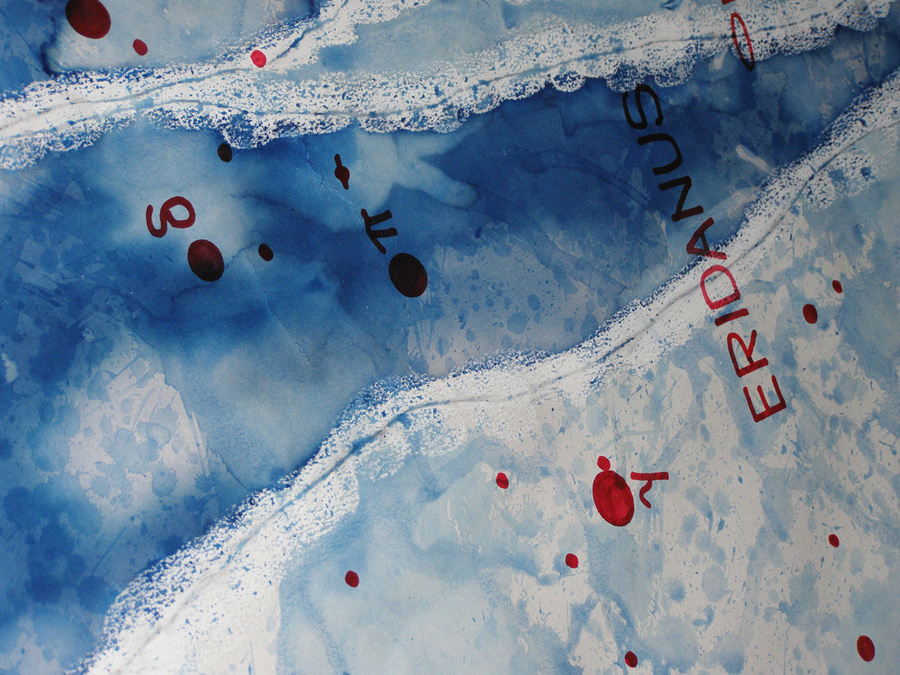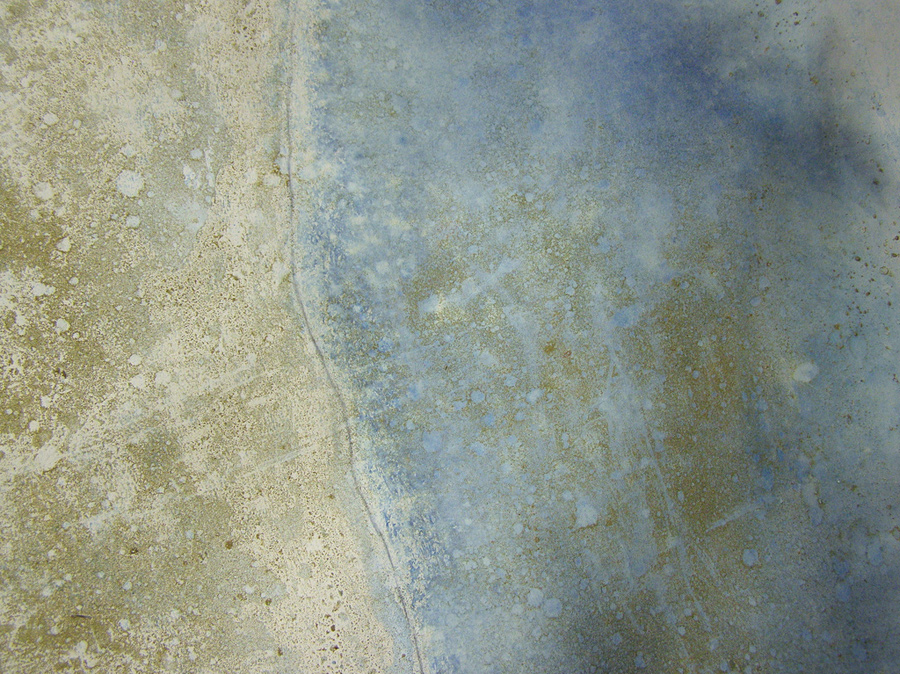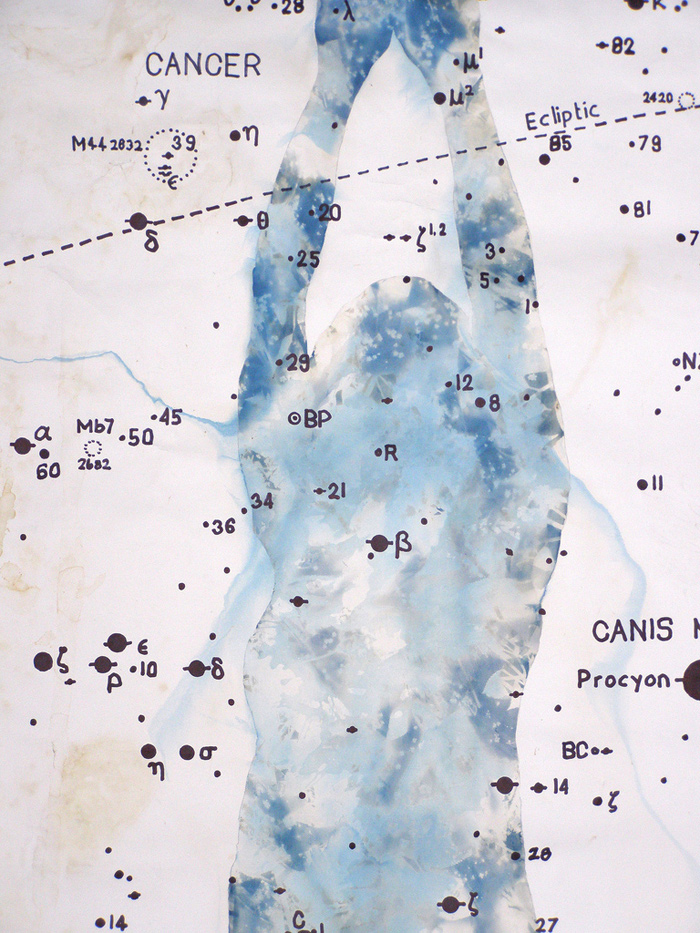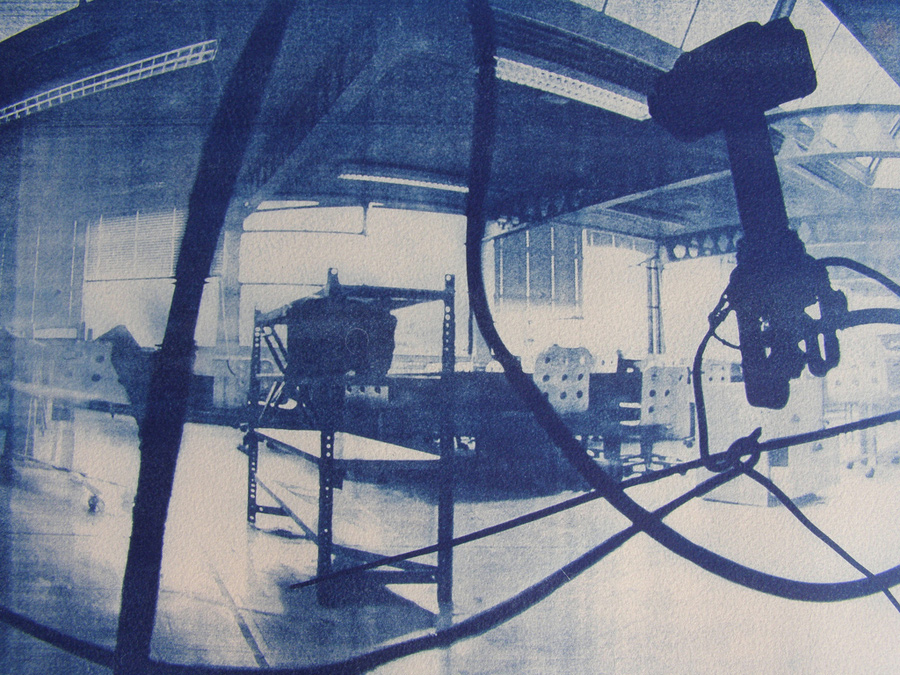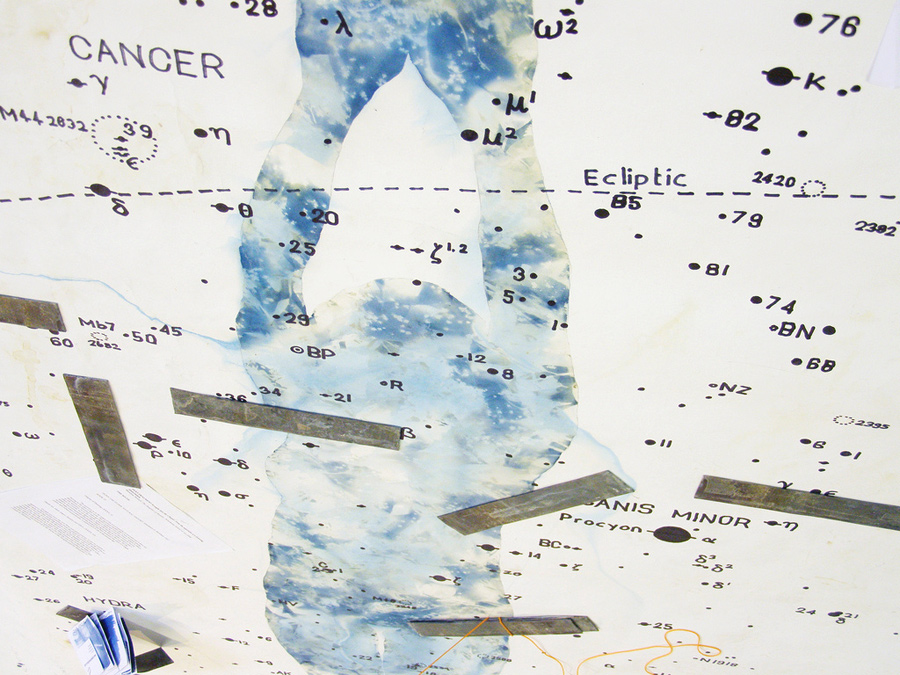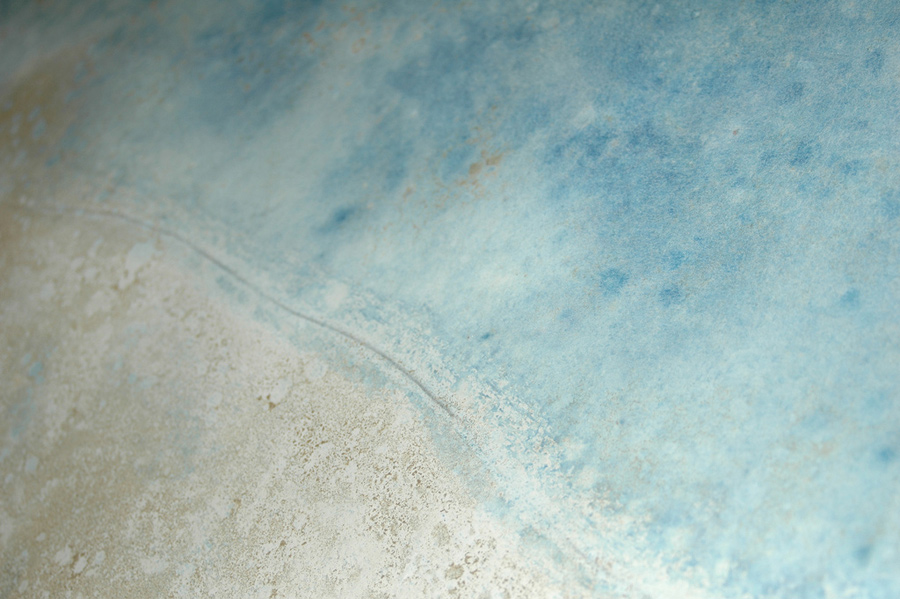Working Notes: Edmund de Waal.
Independent research for Studio Practice Theory and Analysis
Why does Edmund de Waal make architectural interventions through the arrangement of porcelain pots?
To what extent, if any is this Ceramist interested in the ability of the single pot to engender meaning?
How is the “innerness” of pots that he talks about so eloquently actually manifested in his architecturally staged installations and exhibitions?
Signs and Wonders: Edmund de Waal and the V&A Ceramic Galleries 2009.
During his career Edmund de Waal has moved from that of being a domestic potter to that of an installation artist.
His large scale installations show large groups of ceramic vessels, these are often in historic architectural settings. He is both an artist and an historian of ceramics. His installation Signs and Wonders contains up to 425 pieces of wheel thrown porcelain. This site specific installation is located at the heart of the galleries. The installation will be visible to viewers as they look upwards into the space of the monumental central dome.
Central to Edmund de Waal’s practice is the concern to offer a ‘dialogue about the use, preciousness, survival, preservation and display of ceramics.’ (Graves,2009:8)
He has further explored the use of installations and vitrines in the pursuit of framing and underpinning these intellectual concerns. The use of purpose made structures, shelves and boxes adds the aesthetics of a tightly control clean minimalist style of presentation to his assembled collection of pots.
Interpretation and display are now central to these ‘grouped works’ that have become presented as ‘cargoes of pots’ that now seem at home in the collecting environment of the museum.
‘The way in which the pots are displayed has become an integral part of the work. And increasingly there is a sense that it is about putting on a show, albeit one that might be for a private audience.’ (Graves,2009:8)
De Waal working with specific settings has produced installations that by their very impermanence offer ‘new and unexpected dialogues’ through interventions that are ‘framing pots within architectural features or the intimate spaces of furniture.’ (Graves,2009:10)
‘By altering the character of a known space, by intruding on areas within it that might not usually be associated with the display of art, the viewer’s awareness of both the changes and the space are heightened.’ (Graves,2009:10)
This methodology of display ultimately disappears as if it were never actually present, leaving the underlying fabric of the interior space as it were untouched, the impermanence of the work now resides only in its memory.
What remains of these sensing spaces (interiors) through spectacle, event and place? Proposal for the ceramics department at the Victoria and Albert Museum.
Site specific work in the new contemporary ceramics gallery that responded to the architecture of the space, and that could remain in place for years. An installation or feature that could remain in place and yet allow the gallery to function as a location for frequently changing displays and exhibitions.
De Waal’s response is Signs and Wonders ‘a lacquer red metal channel tracking the circumference of the dome and housing more than 400 of his pots; is an act both of daring and of breathtaking elegance and simplicity, a magisterial achievement on a scale surpassing anything he has previously undertaken.’ (Graves,2009:10)
Signs and Wonders is in reality a major contemporary architectural adaptation into the very fabric of the historical building. Its very reality creates a physical link between the past and the present, and it represents a long term commitment that began with the redevelopment of the ceramic galleries into the new Contemporary Ceramics Gallery.
Edmund de Waal’s Signs and Wonders is an iconic statement of intent for the Contemporary Ceramics Gallery, it underpins a new platform for the expanding territory of creative practice in ceramics. Signs and Wonders actively seeks to simulate new ways of seeing ceramics.
Architectural feature that comprises of some 425 thrown pots made of porcelain by Edmund de Waal and installed under the oculus of the great dome situated directly above the main entrance hall.
Edmund de Waal reflects on the vitrines that used to be found in the old ceramic galleries (room 137) at the Victoria and Albert Museum in the 1970s.
‘Most of the vitrines were firmly policed into taxonomies of kiln or modeller or religion, less ’pseudo-scientific’ than a slightly desperate attempt to control the vastness of the collection. Some of the vitrines had the work of a single potter. All the pots by Hans Coper used to be in one mahogany case, huge early textured vessels shadowing the fine later Cycladic forms. They barely fitted.’(De Waal,2009:16)
De Waal’s memories of the old galleries in the 1970s was that they were an attempt to compare pots from different galleries, of the strangeness of seeing through one great case into another; the tops of a row of bottles cresting a line of dishes and the layering of one series of forms or colours onto another. And of course the fact that there were very few people.
Signs and Wonders; Edmund de Waal.
‘I have made an installation of pots for Galleryl41. There are 425 vessels made out of porcelain and they are placed on a red metal shelf that floats high up in the dome. You can just see it from the entrance hall through the square aperture in the coffered ceiling if you stand in one of the mosaic circles on the floor. It is called Signs and Wonders.’
I want to make this installation part of the fabric of the V&A. (De Waal,2009:20)
‘It began with the combination of a gesture of a pen and the plans to this austere bit of Edwardian architecture.’ (De Waal,2009:22)
The porcelain vessels are on a red shelf, the colour of lacquer.
The integrity of the shelf is upheld by being made from a proper material so as to form an accord with the historical architecture.
De Waal has experimented with placing porcelain on steel shelves and by having pots placed within lead lined boxes. He is aware of how these materials can form provocative combinations from their inherent densities.
The controlling presence of the vitrine is an intervention itself of its own display, (decommissioned mahogany vitrines from the V&A, illustrate the phenomenal weight of these enclosures)
De Waal’s porcelain vessels (shape shifters) are in effect objects from memory brought into a shifting nature of influences from the Chinese porcelains, the 1800 Century European porcelains and the collections of the Modem era from Vienna, Bauhaus and the Constructivists.
‘This is not a simple linear relationship, but part of a flow around into Modernism and back again. It is a perpetual rediscovery.’ (De Waal,2009:26)
On Pots Behind Glass:
On the memory of objects, the afterimage, its distillation, and the blindness of looking away that gives it its form. What is left to be adapted or to be pared down through volume and angle into these new reflective forms?
Derrida on drawing from ‘blindness’ The shadows of the stacked pots.
‘I wanted to work with objects that have been part of my life for 30 years, and to make sense of my memories of how pots lived in the galleries.’ (De Waal,2009:26)
‘Other sections, one run of bottles that are in different celadons for instance, are a memory of vessels from disparate parts of the ceramics collections brought into a taxonomic focus. This is the use of memory and the after-image as the intense holding of a form on the retina.’ (De Waal,2009:26)
In Heidegger’s work ‘not least in his use of etymologies, his writings are imbued with a sense of historicity; a sense of the passage of time, of destiny, and of the past as a reservoir of thinking available to contemporary life.’ (Sharr,2009:99)
The Architecture of Place :
Architects that were sensitive to site, dwelling, inhabitation and place. Form Making as a Response to Site and Inhabitation.
In The Ethical Function of Architecture 1997, Karsten Harries seeks to reclaim a sense of meaning in architecture that he feels has been lost to a scientific rationality. He sees ornament as being able to convey meaning by linking and reflecting stories and in so doing it gives us an appreciation of nature. This type of ornament has a poetic function in that it helps to locate people with their place and community.
Dalidor Vesely believes that architecture can manifest the attitudes of its builders, and that this can describe through the very fabric of the building the very thinking of the society that implemented its construction.
Vesely ‘explored what he considered to be the tensions between instrumental and communicative, or technological and creative, roles of architecture. He argued that these roles have become divided; a split which is recorded in the respective roles of architects and engineers. Vesely traces the historical origin of this division to that of mediaeval optics and the development of perspective; to the first attempts to privilege a scientific description of light over immediate experiences of the qualities of vision. This division is a crisis of representation, that that is displacing meaning in architecture from human experience to the visual qualities of surface and appearance.’ (Sharr,2009:103)
For Vesely, creativity remains the antidote to technology.
Zumthor shares with Heidegger in that he believes in architecture’s potential to evoke associations and invite meaning.
Regionalism, a critical dialogue with the site, a rapport between place and building as if it had always been there.
‘Stone and water are more than materials or phenomena for Zumthor; they’re also intellectual notions, traditions of thought with a long history.’ (Sharr,2009:104)
Critical Regionalism, see Kenneth Frampton, ‘Zumthor aligns himself with Frampton when he writes about a critical dialogue between his designs and their sites, unafraid to claim meaning from locality.’ (Sharr,2009:105)
Choreographing Experience.
Zumthor ‘I need time to create an atmosphere, I have to be careful about things otherwise I won’t have this atmosphere and the whole objective of my work somehow would be gone. That’s the way I work.’(Spier,2001:19)
‘Much of the installation uses memory in a different way to produce the blurred after image.’ (De Waal,2009:28)
De Waal cites the photographer Hiroshi Sugimoto as being a revelatory influence on this notion of memory and the blurred after-image. In particular the series
‘Architecture’ which features blurred photographs of Modernist architecture. These images seemed to have the ability to take ‘you back to a particular moment standing in front of a particular building. It was that they seemed to be simultaneously images of a memory of place.’
Sugimoto ‘Architecture’ The German Pavilion from Barcelona, Mies van der Rohe. ‘A graduated run of whites into greys is a memory, for me, of the archive photographs of Bauhaus ceramics with their regimented attempt at teaching pottery by breaking forms down to component parts.’
(De Waal,2009:30)
Hans Coper builds up spatial interiors in his pots by using component parts thrown on the wheel.
The pot can be seen as a cultural trace that can bring a sense of immediacy from across the centuries.
‘The special historical value of pottery is due to its stillness underground. Almost uniquely, it does not corrode or disintegrate when exposed to earth and water, and so it forms the most important part of the physical record of the past. Like an invisible architecture, inverted and buried out of sight, they are our most reliable evidence of human endeavour.’ (Adamson,2009:36)
The Architecture of Natural Light, Henry Plummer 2009
Procession, the choreography of light for the moving eye.
Iconic works of space in motion: The Perceptual Flow.
‘Related concepts relevant to architecture are found in the films of Andrei Tarkovsky, for whom cinematic flow is a living rather than linear experience, achieved when film is stretched and lengthened by human memory and by images that evoke something significant beyond what we see before us, allowing time to flow out of the edges of a frame. ’(Tarkovsky, 1986:117)
Mies van der Rohe’s Barcelona Pavilion. Peter Zumthor’s Therme Vais.
Donald Judd’s Untitled 1980.
Jean Nouvel’s Culture and Congress Centre 1999.
‘More important still to de Waal’s project is the way that Judd’s stacks use interval. These cantilevered boxes are literally, one thing after another; but they do not touch. Rather the positive steel and plastic elements are separated by negative spaces that are their exact equal in volume. The works operate according to a binary, on/off logic, suggesting temporal as well as spatial extension.’(Adamson,2009:40) see also
Michael Fried, Art and Objecthood: Essays and Reviews: Chicago, 1967/1998.
Fried recognizes the durational aspect or dimension of minimalist sculpture, but condemned it for its “quasi-theatrical presence” that by occupying the time of the viewer this sculpture became mundane and everyday rather than transcendent.
Stacking is a way for de Waal to engage with the history of sculpture. It can be thought of as a compositional tool that suggests the storeroom, the kiln or a way of just putting pots together. Stacking produces a visual syntax through ‘exploring the formal and implicitly psychological relationships that pots can have with one another. ’(Adamson,2009:38)
Simultaneous Temporal Structures: Windows or Objects in Sequence.
‘Pictures in motion have long been exploited by Parisian architect Jean Nouvel, who describes his buildings as “scenographic” with routes composed along a series of camera angles and apertures.’ (Plummer,2009:56)
‘Another technique Tarkovsky employs to loosen time from any rigid progression is the directorial power to endow not only the entire film, but also its segments and even separate frames, with simultaneous temporal structures that are not unlike William’s “ice in March” or Viola’s “parallel times”.’ (Plummer,2009:56)
Steven Holl ‘movements are threaded rather than linear, pulled vaguely along by what Holl calls sequences of shifting and overlapping perspectives. Beckoning light draws the visitor onward step by step, and image by image, through a fragmentary rather than comprehensive narrative. (Plummer,2009:56)
Gianni Vattimo, Italian Philosopher.
The End of Modernity: Nihilism and Hermeneutics in Postmodern Culture. 1991.
Weak Ontology/Fragile Thought.
A latent learning under the safe light of the darkroom. The red pages of the signs and wonders catalogue links a narrative with spatial object of his installation by its colour, but it might also reflect the inner space of the photographic darkroom.
‘Light neither centres nor aligns space, as in the past, but appears in the periphery as a vague and marginal background event.’(Vattimo, 1991:85)
‘Filled with intricate constellations’: (Adamson,2009:34) Looking/seen from the oculus of the dome.
‘De Waal has placed his pots in circulation, but not in the sense that they can be held and passed around. They are even, to some degree withheld.’ (Adamson,2009:34)
“When they are so high up they become blurred”
Rather than the object stranded on the plinth attempting to flag you down, if you place it elsewhere there is a feeling of possibility and latent discovery, similar to the feeling that you get if you are lucky enough to see the stores of the museum.
(De Waal,2009:30)
In between spaces/stores and other latent spaces, re Mike Nelson, photographic darkroom between rooms. London 2007.
Wallace Stevens, Anecdote of the Jar. (1919) Heidegger, The Jug, “gathering vessel”
“What is de Waal charting in these looping circles within circles?”
De Waal acknowledges the influence of Wallace Steven’s poem “Anecdote of the Jar”. Glenn Adamson remarks how the special qualities of the round perhaps thrown pot is itself both an object, brought into the being by the world and encircled by it. (Adamson,2009:34)
In so “being” the vessel brings its own order, a subjectivity that acts and takes dominion everywhere. This communion (spatial relation) between the vessel and its environment is further echoed in the lines of the poem “the wilderness rose up to it, and sprawled around, no longer wild”(Stevens, Anecdote of the Jar. (1919)
Signs and Wonders is about seeing pots from a distance, De Waal is seeking to reflect the sentiments found in Wallace Stevens poem that makes the pot itself appear as a still centre from which we can step back from and observe as it/we gather our surroundings. This work is not about tactility, immediacy or possession, perhaps De Waal has succeeded in producing a collection that is also ‘a talisman of subjectivity’ of one man’s personal vision of ceramics.
‘When potters throw a certain curve in a vessel wall, they are in affect in dialogue with every kindred pot that they have seen or held. Like an archaeologist’s excavated sherd, the experiential dimension of making can act as a bridge across temporal distances.’ (Adamson,2009:44)
Temporal Zones/Re-Imagined Social Landscapes: Archaeology/Making : Pot Shard/Pottery.
See Tim Ingold the four A’s, Anthropology/Archaeology/Art and Architecture.
Working Notes : 26 February 2014
Theory and Analysis/Tutorial with Simon Olding CSC.
COMPONENTS :
Essay 2000-3000 words and a research journal that informs the essay/texts. Interested in using this research to inform my “Object Analysis” and its exploratory essay.
The Object:
Ceramic Vessel made by Hans Coper.
A Level Ceramics at Farnham Sixth Form College. Workshop experience locally at the Hop Kiln Pottery, Farnham and at Grayshott Pottery.
HND in Ceramics, Epsom School of Art and Design.
Self employed and freelance as a ceramist until 1992.
Currently working with clay in a contemporary practice that includes Architecture, Fine Art and Performance.
Research Questions.
What “anthropological traces” remain within the vessel of the “Pot”
What is its Symbol-Function-History.
How much of the artist’s social biography is caught up in its making.
Does the object in question underscore a deeper humanity/ a visionary present. How does the craft of making affect the perceptions of our surroundings.
The worn vessel/telluric values and the sensuality of humans.
Making: The Contemporary Craft Praxis. Research Texts.
Making, Tim Ingold.
The Perception of The Environment (Essays in Livelihood, Dwelling and Skill) Tim Ingold.
Heideggar for Architects, Adam Sharr. A Potters Book, Bernard Leach,
Hans Coper, Tony Birks/Contemporary Potters/Ceramic Review. The Psychoanalysis of Fire, Gaston Bachelard.
Rethinking Materiality, Colin Renfrew. (At The Potters Wheel)
How Things Shape The Mind/A Theory of Material Engagement, Colin Renfrew.



















.jpg)
.jpg)


















